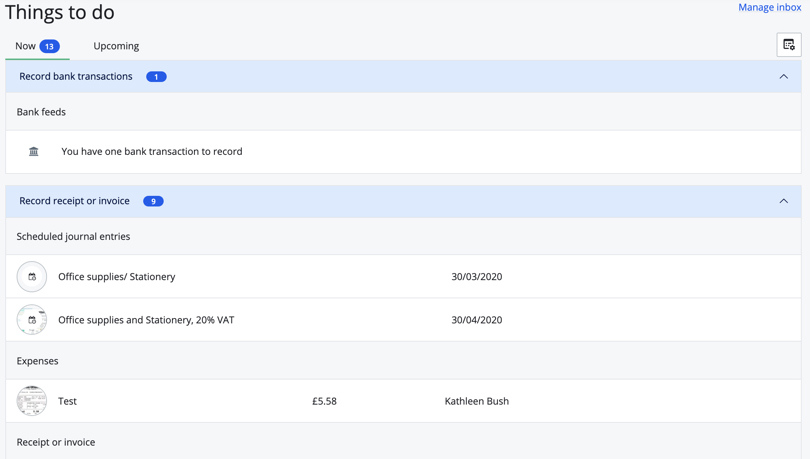Getting started with bookkeeping in Bokio
Traditional bookkeeping can be difficult and time-consuming. Bokio is designed for you to be able to do all your bookkeeping yourself quickly, easily, and automatically. From setting up bank feeds and recording transactions to submitting your VAT return. Let’s break down the whole process into four simple steps.
Step 1: Upload and record documentation
Bokio has been created to make bookkeeping as quick and easy as possible. You can use the ''Record” button in the left-hand menu to upload receipts, or you can take a picture of your receipt using your mobile phone and upload it using the app.
Choose what you’re going to record and our modern bookkeeping solution means you’ll never have to think again about bookkeeping accounts, debit, or credit.
The system interprets the uploaded documentation and suggests bookkeeping templates to use. For example, if you’ve bought a computer, you can search for “computer” and Bokio will suggest a template to record the computer. The system reads the picture or file and can extract both the amount and the date.
Find out more
- How to enter bookkeeping records in Bokio
- Entering bookkeeping records manually in Bokio
- What happens when I enter a bookkeeping record for a journal entry?
- Deleting and editing journal entries
Step 2: Follow up and manage transactions from “Things to do”
From the “Things to do” page, you can manage most of your bookkeeping transactions. If you’ve created a customer invoice in Bokio, you can tick it as paid from here. On a saved supplier invoice, you can see how long there is until the payment due date. This is where all of the material you’ve imported via “Upload” or “Receipt inbox” is stored if you haven’t recorded it yet.
If you take care of your bookkeeping on an ongoing basis, this page is a good way to get an overview of what needs to be done.

In “Things to do”, you can also manage imported bank lines from your bank feed and match these automatically with bookkeeping records or create customer and supplier invoices. This function is also handy if, instead of ongoing bookkeeping, you do bank imports for one or more months and record the transactions directly from the bank lines.
Find out more
Step 3: Check and reconcile your bookkeeping against your bank account
A good way to check your bookkeeping is correct is to reconcile your bookkeeping with your actual bank account. If the amount in your bookkeeping account e.g. 1200 matches the the company then there is unlikely to be any missing transactions.
This is best done by going into the general ledger in Bokio. Here you can see a summary of all the accounts for each fiscal year. It’s a good idea to reconcile these monthly. You can select the month and then compare this with the closing amount on the bank account statement for the same month. If you have set up bank feeds in Bokio you can check the actual bank balance by clicking on bank feeds in the left hand menu. You have opening and closing balances and all the debit and credit transactions for each bookkeeping account.
Step 4: Submit VAT returns
Business that are registered for VAT must submit VAT returns to HMRC. The VAT return contains information about how much VAT you’ve paid to suppliers when you’ve bought goods or services and how much VAT your customers have paid you. If we combine these two amounts, we’ll see how much you will pay or get back from HMRC.
When you enter bookkeeping records using Bokio’s templates, VAT is calculated automatically (provided that the goods or services aren’t VAT exempt). The VAT return is then automatically generated based on the bookkeeping records you enter. At the end of the period, you just have to submit the VAT return through Bokio to HRMC and record the VAT payment. You can find this in the left-hand menu under “Reports” and "VAT returns".